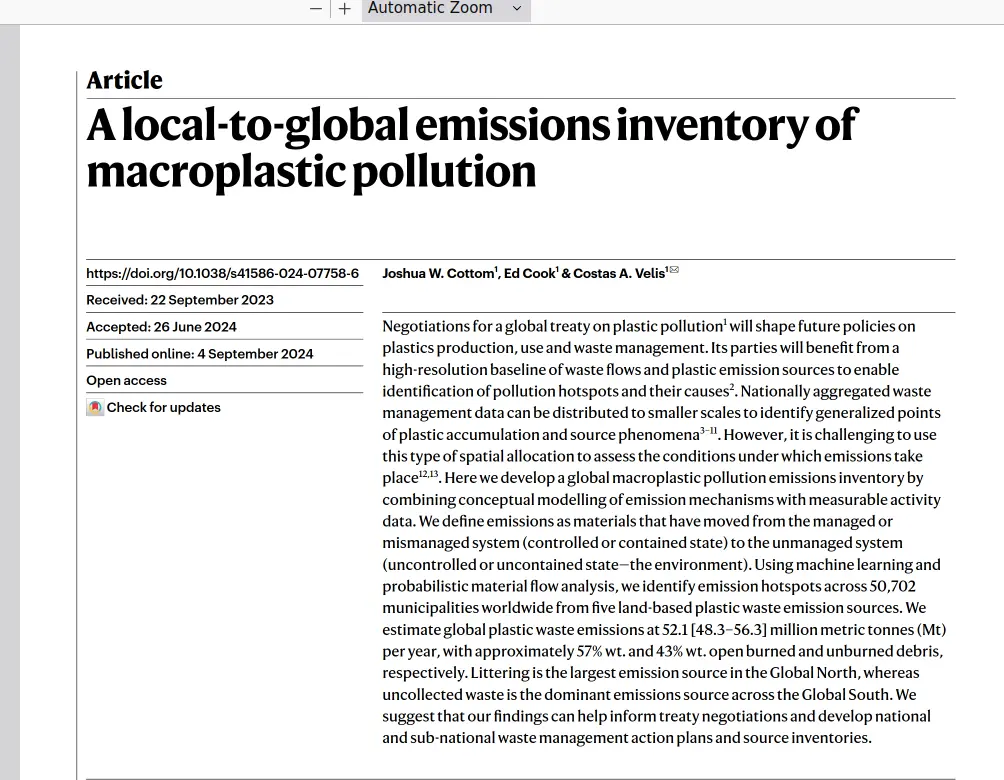cross-posted from: https://feddit.dk/post/9778976
Abstract
The disparity in environmental impacts across different countries has been widely acknowledged1,2. However, ascertaining the specific responsibility within the complex interactions of economies and consumption groups remains a challenging endeavour3,4,5. Here, using an expenditure database that includes up to 201 consumption groups across 168 countries, we investigate the distribution of 6 environmental footprint indicators and assess the impact of specific consumption expenditures on planetary boundary transgressions. We show that 31–67% and 51–91% of the planetary boundary breaching responsibility could be attributed to the global top 10% and top 20% of consumers, respectively, from both developed and developing countries. By following an effective mitigation pathway, the global top 20% of consumers could adopt the consumption levels and patterns that have the lowest environmental impacts within their quintile, yielding a reduction of 25–53% in environmental pressure. In this scenario, actions focused solely on the food and services sectors would reduce environmental pressure enough to bring land-system change and biosphere integrity back within their respective planetary boundaries. Our study highlights the critical need to focus on high-expenditure consumers for effectively addressing planetary boundary transgressions.
From the paper - definition of the top global consumers:
The global 10th percentile level of final demand is about US$27,000 per year, equivalent to the European average in 2017. The global 20th percentile level is about US$12,000 per year, comparable to the threshold of high-income countries defined by the United Nations in 2017.
 .
.
Lol, it's real: https://sib.illinois.edu/directory/profile/hanks